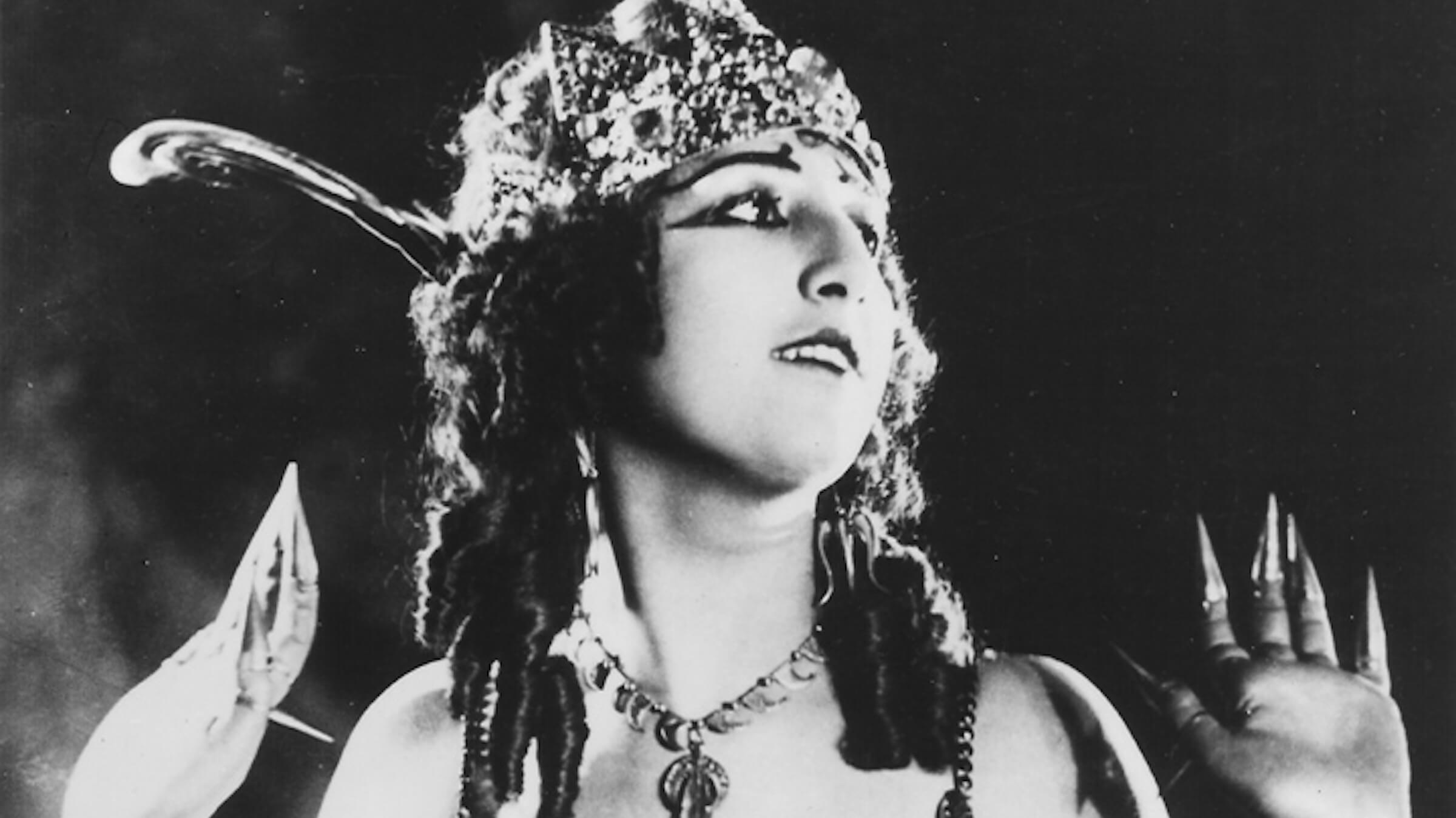Between 1909 and 1914, the Italian film industry produced an average of 500 films per year. In contrast to the self-made moguls of American studios, Italian production companies were headed by cultivated members of the aristocracy, who made films based on historical, biblical, or mythological subjects in keeping with the literary and dramatic tradition of grand opera. As a result, costume films were one of the earliest genres of Italian cinema. One of the most famous examples is Cabiria (1914), directed for the Itala company of Turin by Giovanni Pastrone. A truly monumental film in every sense of the word—the original version is approximately three hours long, an unheard-of running time for a film made in 1914—news of its existence captured the imagination of the world long before it was actually exported. Among those for whom the ground trembled was D.W. Griffith, who reportedly was inspired to create Intolerance (1916) after seeing Cabiria. At an equally significant and no less momentous level, Cabiria also launched the career of a character who would become an international pop hero: Maciste the Strongman.
Cabiria tells the story of an aristocratic Roman child who is repeatedly saved from danger by a loyal slave of tremendous physical strength named Maciste. To portray this superhuman character, Giovanni Pastrone selected a nonprofessional he had discovered in Genoa who was employed as a dockworker, Bartolomeo Pagano. The tremendous success of Cabiria swept both Bartolomeo Pagano and Maciste to international stardom.
Popular response to Maciste prompted Pastrone to launch his new discovery—often described as “the good giant”—in a series of strongman films, spawning a whole genre featuring Olympian heroes such as Ajax, Saetta, and Samson, among others. Their names were derived from classical mythology but, unlike the rarefied divi of most Italian films, they were populist icons whose strength stood in opposition to the decadence and languor of aristocratic figures. They were essentially men of action, whose heritage was the circus and variety show, not the opera. Thirteen wildly successful Maciste films were produced between 1915 and 1926, including Maciste il fuoco (Maciste the Fire, 1915); Maciste alpino (Maciste in the Alpine Regiment, 1916); Maciste atleta (Maciste the Athlete, 1918); Maciste contro la morte (Maciste Against Death, 1919); a trilogy from 1920: Maciste inamorato (Maciste in Love), Il viaggio di Maciste (Maciste’s Journey), and Il testamento di Maciste (Maciste’s Testament); Maciste in vacanza (Maciste on Holiday, 1921); Maciste Imperatore (Maciste the Emperor, 1924); and even Maciste e il nipote d’America (Maciste and His Nephew from America, 1924). Though tested by spectacular challenges in many different settings and historical periods, Maciste was essentially the same in every film. The French critic and filmmaker Louis Delluc called Pagano “the Guitry with the biceps,” comparing him to France’s great theater star.
The last Maciste film produced in the silent era was Maciste all’inferno (Maciste in the Underworld). The screenplay by Riccardo Artuffo provided director Guido Brignone with a scenario rich in fantastic and bizarre humor. Completed in 1925, Maciste all’inferno ran afoul of the censors — reputedly because of charges that its depictions of Hell and Lucifer were blasphemous, which may explain why the Devil is now referred to as Lord Pluto—and the film was released in Sweden three months before it premiered in Italy in March of 1926. Maciste all’inferno was re-released in the early 1940s with a synchronized music and sound-effects track, and the Maciste character surfaced again in the ’50s and ’60s during a revival of the muscleman epic alongside stalwarts such as Hercules, Goliath, Colossus, Samson, Atlas, and “The Strongest Man in the World.”
Maciste all’inferno occupies a very special niche in Italian cinema as the film that inspired Federico Fellini to get into the movies. He spoke of the film as a sort of scena primaria in his personal cinematic subconscious: “I’m sure that I remember it well because the image has remained so deeply impressed that I have tried to re-evoke it in all my films. I saw it standing with my father’s arms around me amidst a crowd of people in wet overcoats because it was raining outside. I remember a large woman with nude belly, her belly button, her eyes darkened with make-up, blazing. With an imperious movement of her arm she created a circle of flames around Maciste, he also half-naked and with a dove in his hand.
Presented at SFSFF 2001 with live music by Michael Mortilla

